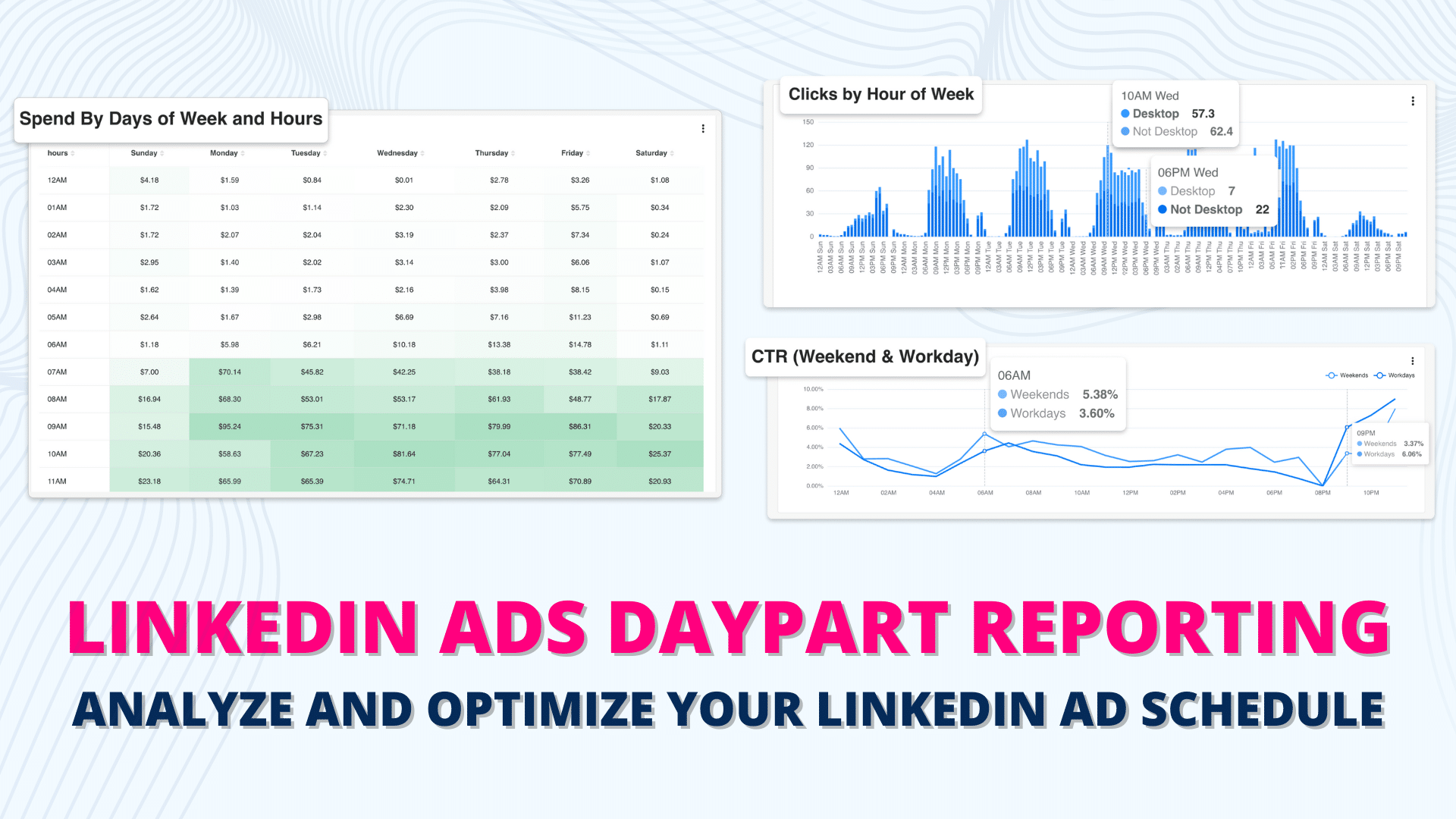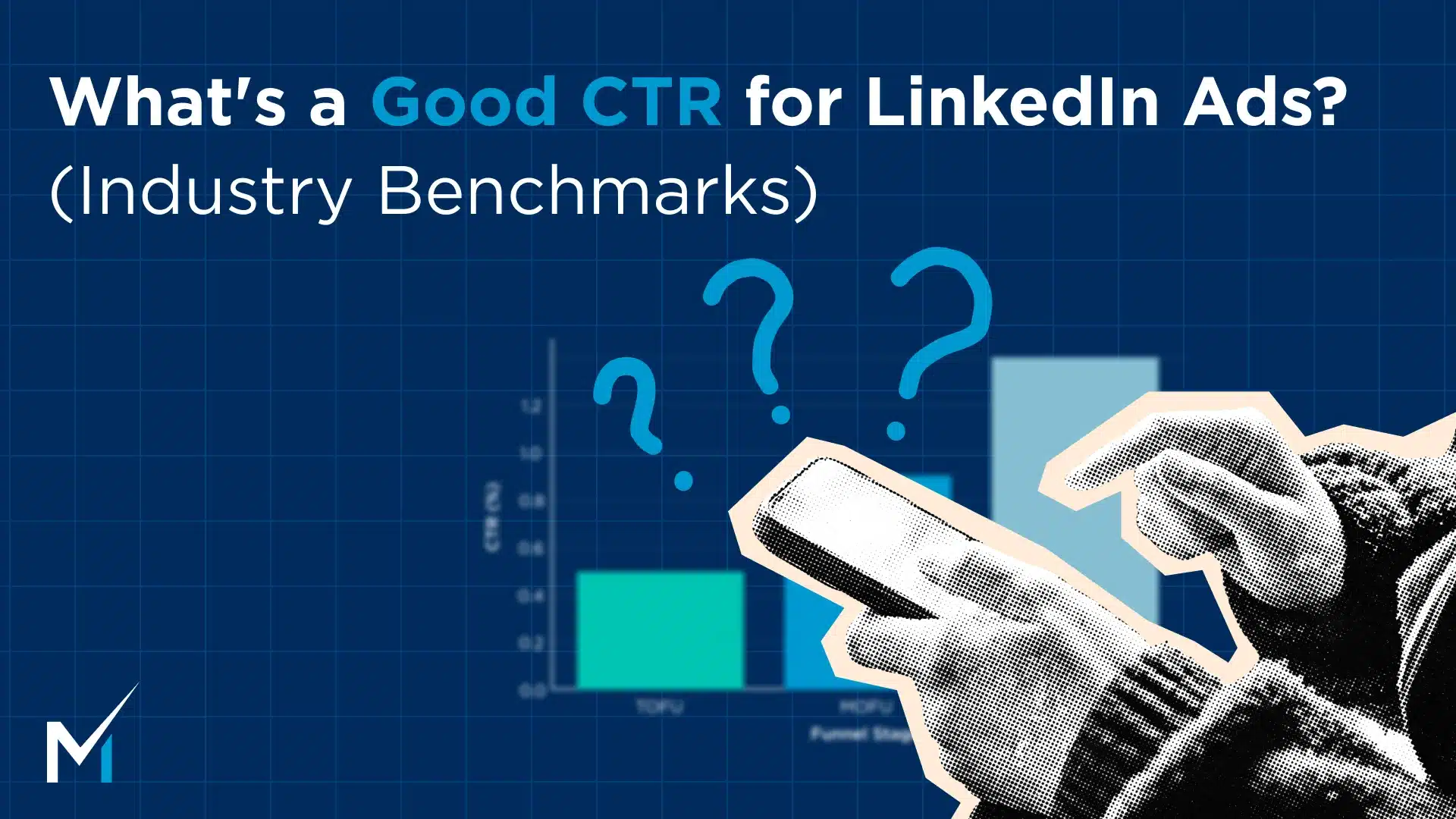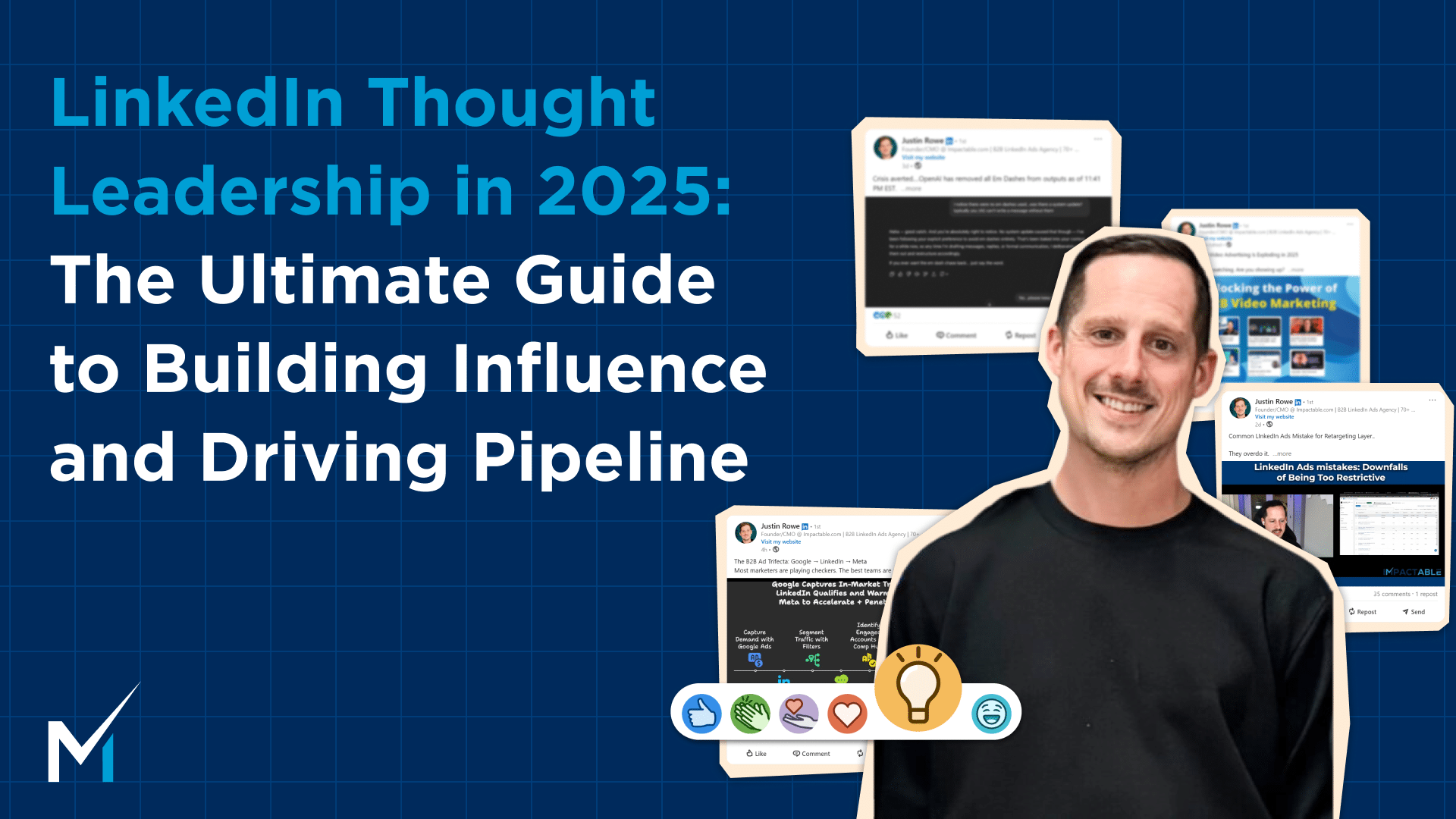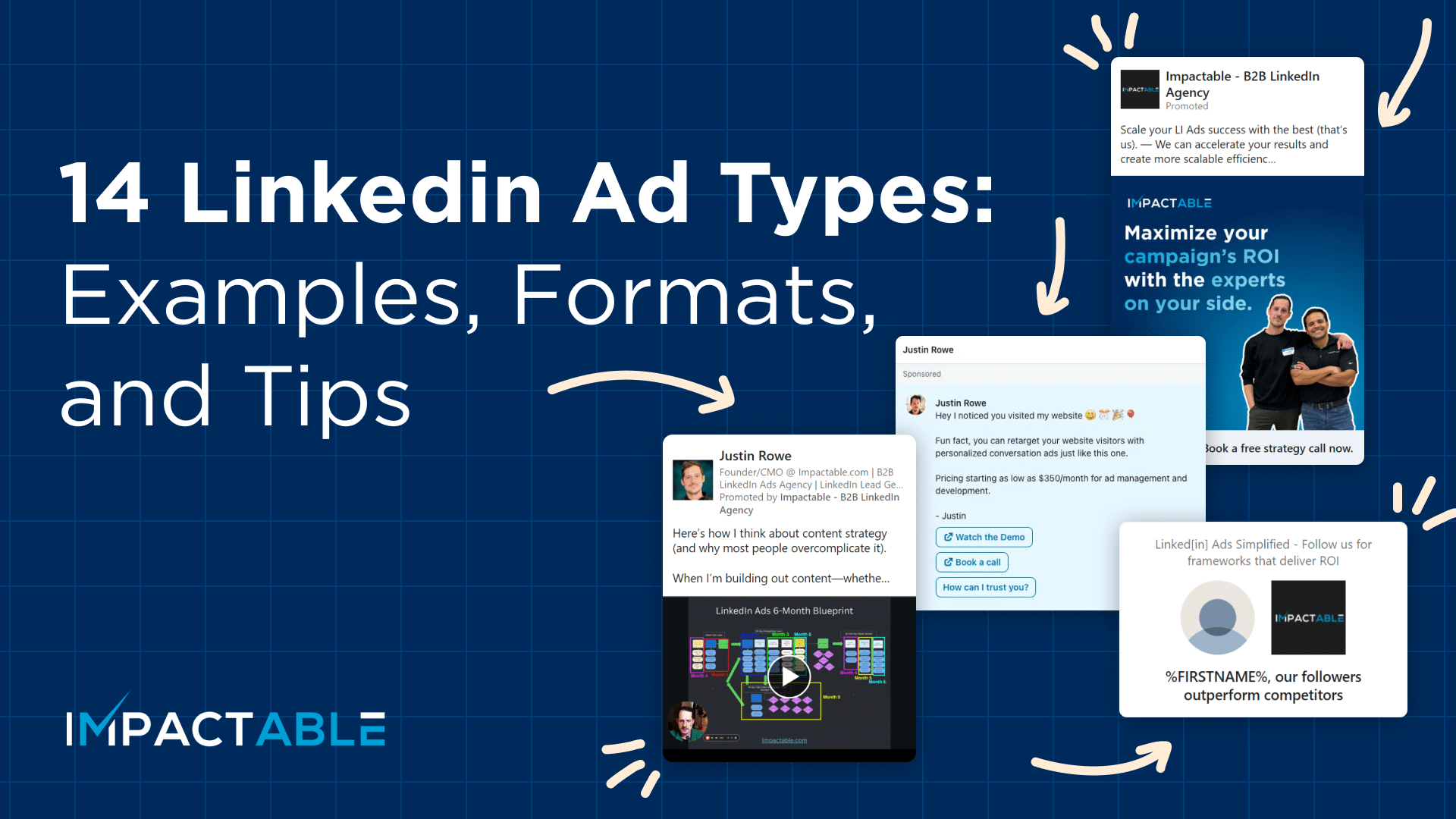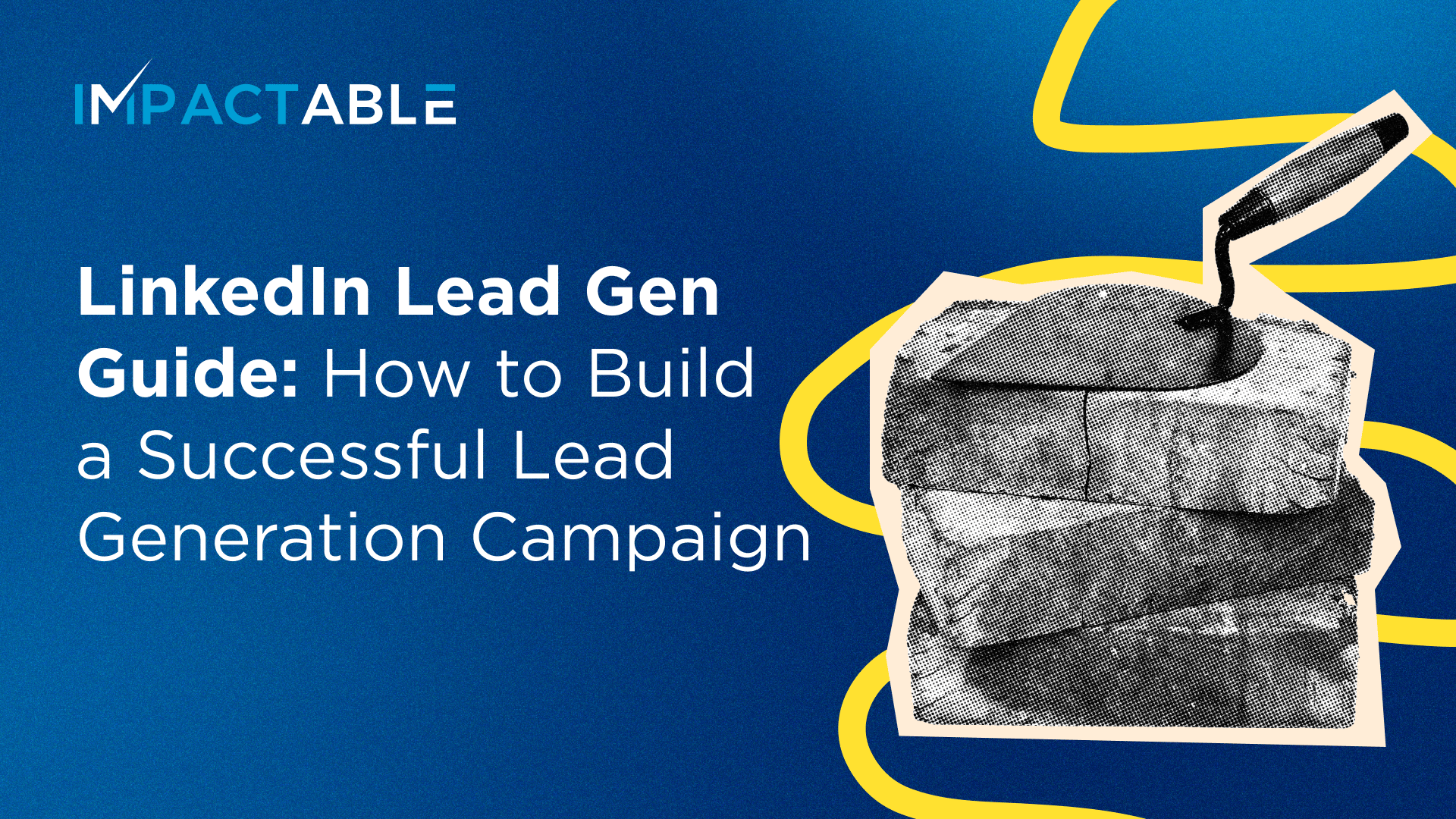With 200+ active LinkedIn Ads clients under management, we understand that timing is crucial to reaching your target audience. That’s why we’re excited to introduce our latest feature in the DemandSense platform: LinkedIn Ads Hourly Reporting.
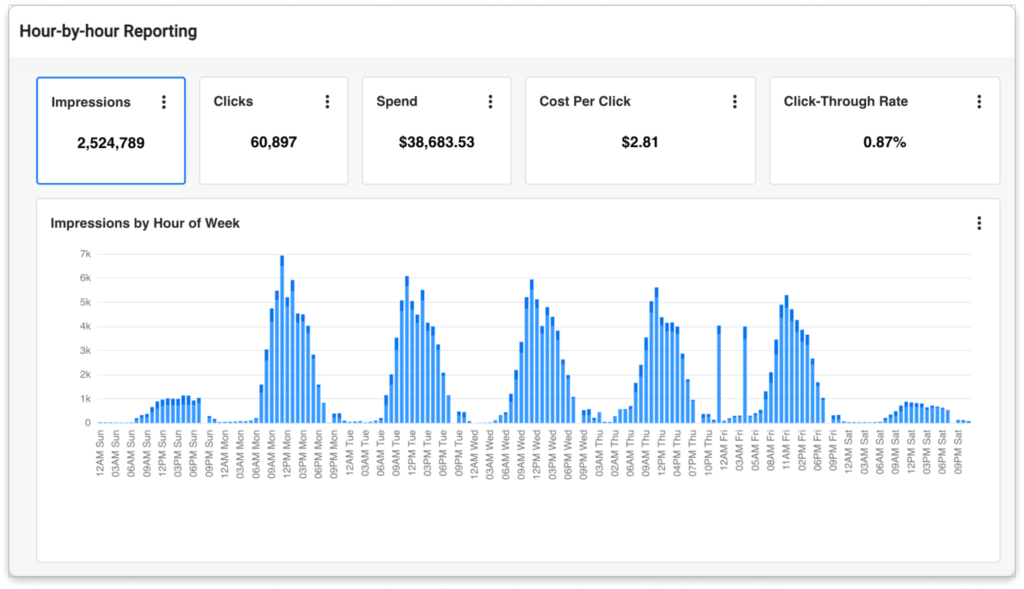
This takes the guesswork out of ad scheduling, providing you with hourly insights to optimize your LinkedIn ad campaigns and then take action with our built-in LinkedIn ad scheduling tool. Let’s look at what this report offers and how each element can be utilized.
Table of contents
Why LinkedIn Ads Hourly Reporting Matters
Knowing when to run your ads can significantly impact your campaign’s success. With our new Hour-by-hour Reporting feature, you can take ad scheduling to the next level by making decisions based on real data from your campaigns.
Key Features You’ll Love
1. Hourly Breakdown by Metrics
Our Hourly Report gives you a detailed breakdown of your LinkedIn ad performance across various metrics:
- Impressions
- Clicks
- Spend
- Cost per click (CPC)
- Click-through rates (CTR)
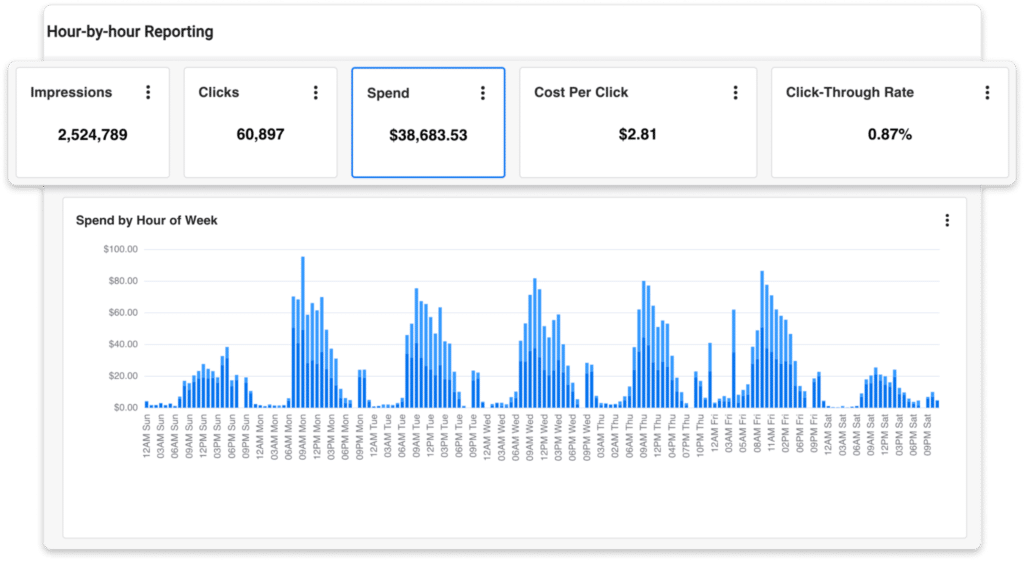
You can see how these metrics change hourly, helping you identify when your ads perform best.
2. LinkedIn Audience Behavior Insights
One of the most valuable aspects of the Hourly Report is the view it provides into your target audience’s behavior. You can see when your audience is most active and engaged, allowing you to schedule your ads during these peak times.
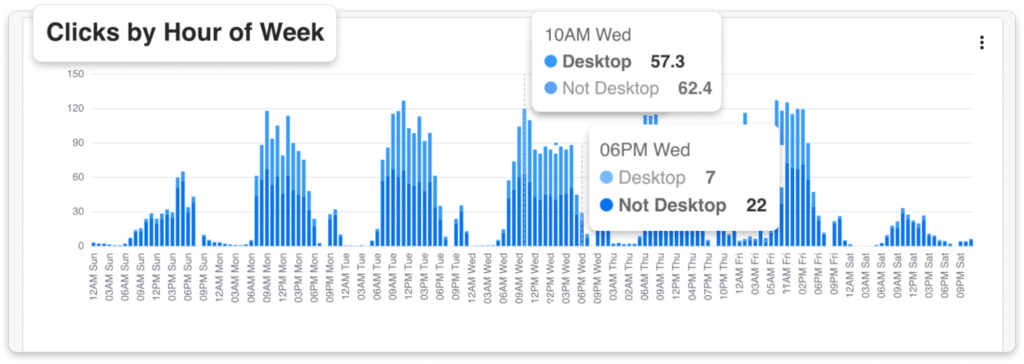
Moreover, the data is segmented by device type, distinguishing between desktop and non-desktop performance. This means you can see how your ad performance varies across devices throughout the day.

For example, you might see that your audience is more likely to engage with your ads on mobile devices during their morning commute but prefers desktop interactions in the afternoon. This insight allows you to modify your ad content and scheduling to match these device-specific behaviors, further optimizing your campaign performance.
3. Customizable Views for Deeper Analysis
We know that you might want to look at your data in different ways. That’s why our Hourly Report lets you view data at both the campaign group and individual campaign levels. This flexibility allows you to fine-tune your strategies with precision, whether you’re looking at overall trends or diving deep into specific campaign metrics.
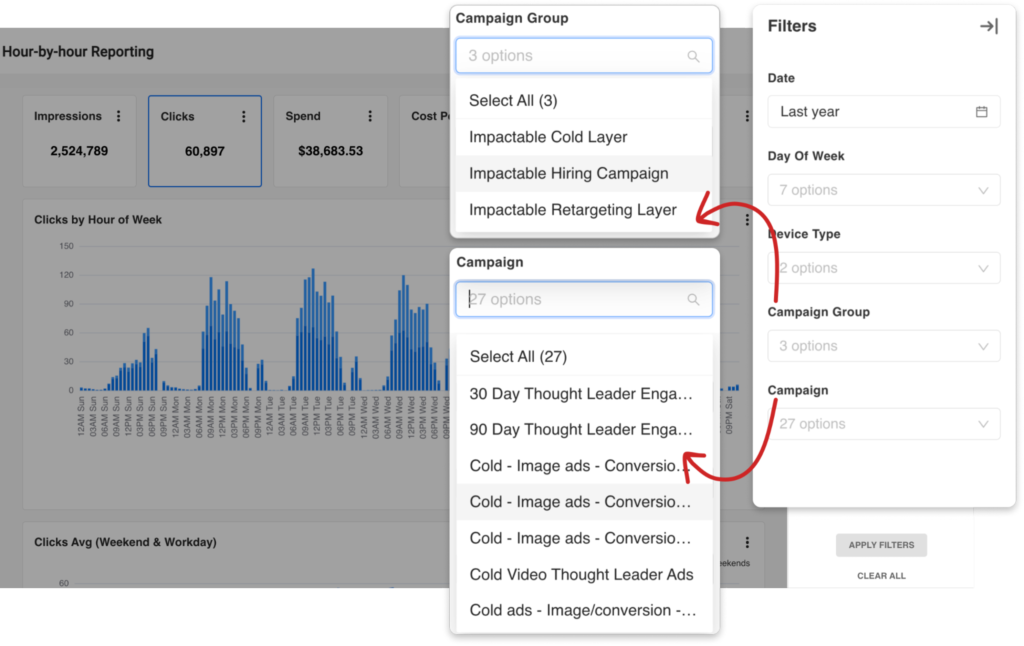
To make the data easy to understand, we’ve included both charts and heat maps in the report. These visual aids help you quickly spot patterns and trends, making it easier to find opportunities for optimization at a glance.
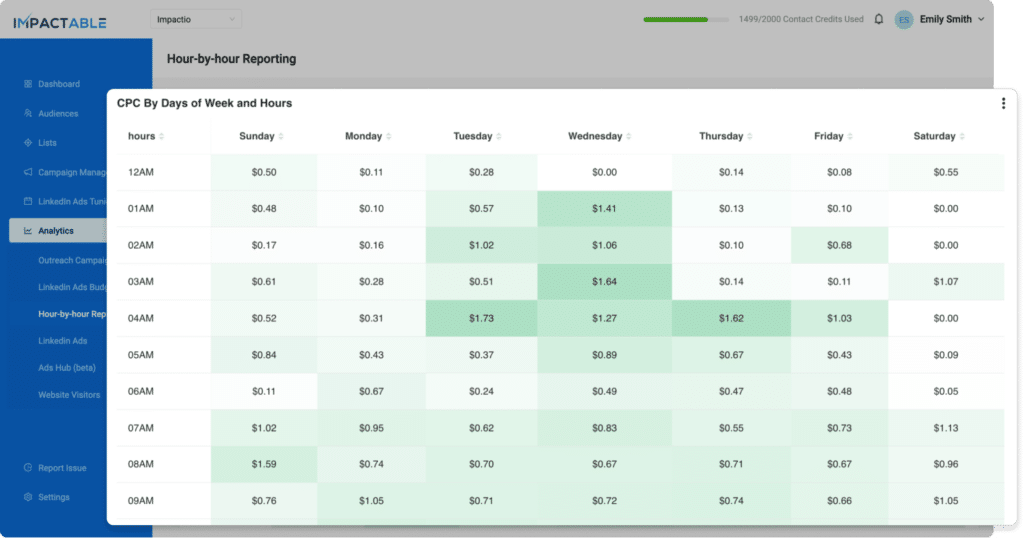
4. Weekday vs. weekend comparison
This feature compares your ad performance on weekdays versus weekends across five key metrics: Impressions, Clicks, Spend, CPC, and CTR. By analyzing these side-by-side comparisons, you can identify shifts in audience behavior throughout the week. Use these insights to refine your ad strategy, decide whether to run ads on weekends, and tailor content for specific days to maximize performance and budget efficiency.
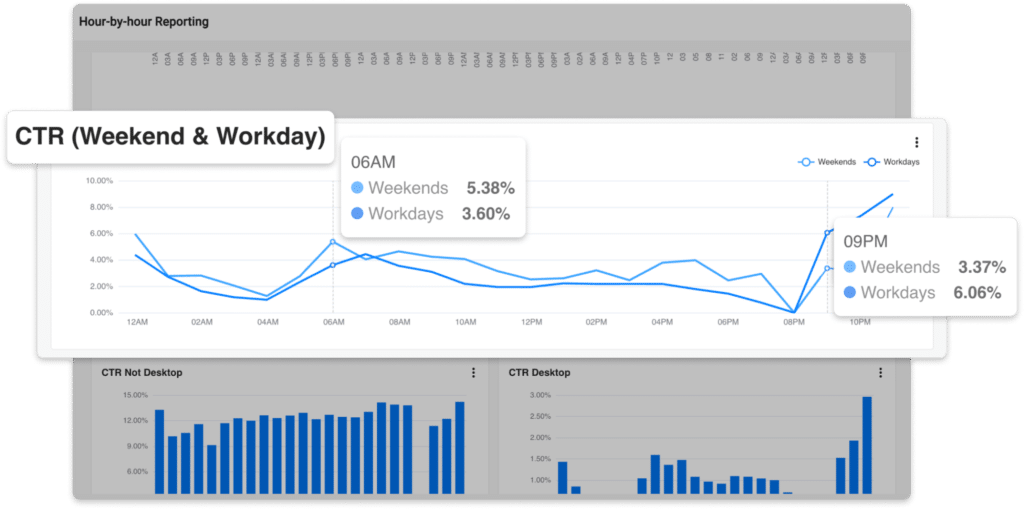
Data-Driven LinkedIn Ad Scheduling
The insights you gain from the Hour-by-hour Report work hand-in-hand with our Ad Scheduling tool. Here’s how you can use them together:
- Run your campaigns for about a month to gather data.
- Use the Hour-by-hour Report to analyze performance and user behavior.
- Create optimized ad schedules based on your findings. You have two options here:
- Set the same scheduling for the whole account, or
- Customize further by analyzing at a campaign group/campaign level and setting up custom schedules for different campaigns.
- Apply these schedules to your campaigns using the ad scheduling feature.
This integration allows you to set up different schedules based on what works best for each campaign or campaign group.
Practical Use Cases of Hourly Report
The Hour-by-hour Report opens up several possibilities for optimizing your LinkedIn advertising strategy:
- Device-specific strategies: You might notice that users are more active on mobile devices during certain hours. You can use this information to schedule mobile-optimized ads during these times or disable these hours for some of your campaigns if needed.
- Content type optimization: Different types of content (like videos, text posts, or images) might perform better at different times of the day. The Hour-by-hour Report can help you identify these patterns and adjust your content strategy accordingly.
- Weekday vs. weekend performance: The report includes a section comparing performance on weekdays versus weekends. This feature allows you to tailor your ad scheduling strategies to account for these variations.
Optimizing LinkedIn Ad Scheduling with Daypart Spend Insights
One of the biggest advantages of the Hourly Report is that it helps you spend your ad budget more efficiently.
Imagine this scenario: you’re running a $5,000 monthly ad campaign, but half of your budget is being spent between 10 PM and 3 AM. That’s $2,500 potentially wasted before your target audience’s workday even begins! Pretty scary, right? We’ve discovered that LinkedIn actually starts running ads on UTC time, which is actually 8 pm EST, so there are many cases when this exact scenario plays out, and entire budgets are dumped before 4 am.
This is exactly the kind of issue our Hour-by-hour Report helps you uncover and fix these issues. By showing you precisely when your budget is being spent, you can make informed decisions about when to schedule your ads. You can easily identify periods of high spend but low engagement and adjust your ad scheduling accordingly. This means you’re not just saving money – you’re ensuring that every dollar of your ad spend has the best chance of reaching your audience when they’re most receptive.
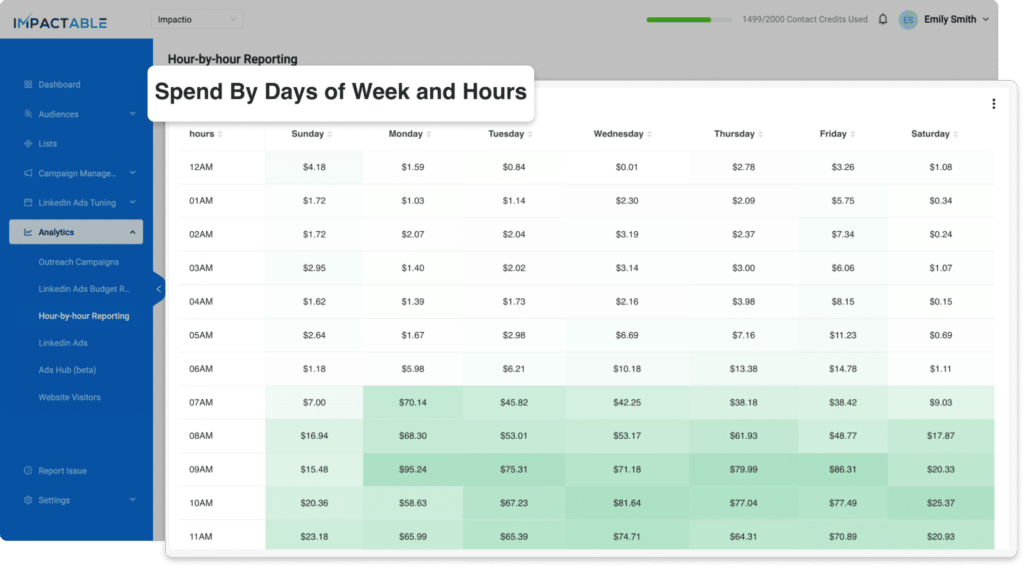
Conclusion
The Hour-by-hour Report gives you detailed insights into when your ads perform best, allowing you to make data-driven decisions about ad scheduling and budget allocation.
Take it for a test drive and try DemandSense for yourself – Try DemandSense
Key features:
Linkedin Ad Scheduling
Hourly Reporting
Frequency Cap
Deeper Demographic insights
Expose Companies Engaging with your Ads
Push Account Exclusions with Ease


